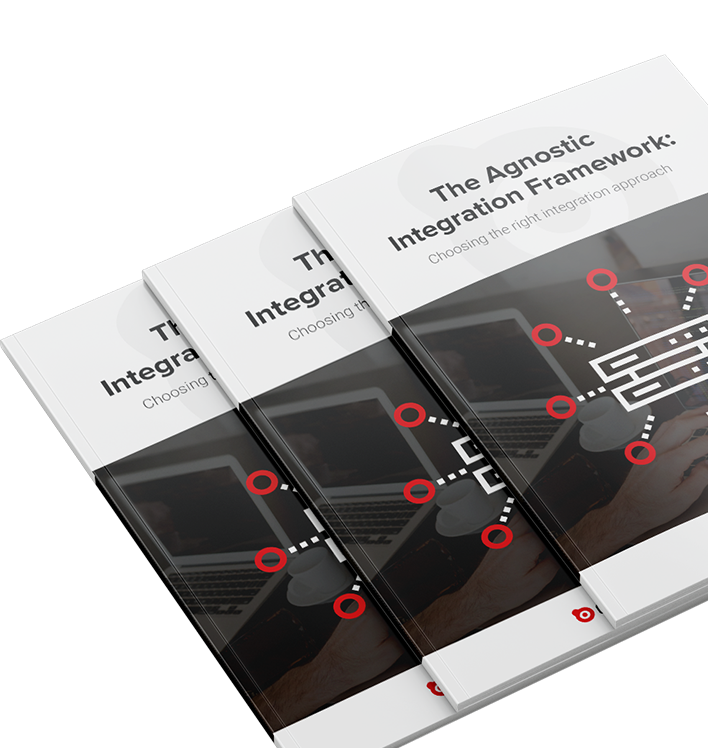Enterprise Integration is fast becoming Enterprise Automation, traditionally transformation projects have a huge focus on integration, the flow of data between application A, B and C. This results in IT-heavy transformation programmes in which integration specialists are required to initiate large, complex, technical changes in order for the business to realise a truly connected experience. Whilst there are many success stories with this approach, the time taken can often be too long, and the outcome can quickly become legacy.
Enter Automation, Automation involves integrating data, but changes the focus to an entire business process or workflow. As an example, an automation initiative could focus on automating the following use cases:
- Learn when previous buyers switch roles and automatically contact them
- Uncover leads via intent data and engage them automatically
- Leverage product usage data to identify cross-sell opportunities and contact them automatically
Automation and Integration focus
With an integration focus, these use cases can be achieved with something such as a Marketo to Salesforce integration or a more general CRM to ERP integration, but that only delivers part of the journey, and would likely result in significant time and cost of highly specialised technical resources. Even when complete, it’s likely that employees would need to act on the outcome of the integrations in order to reach the desired business objective.
Automation puts the process in the hands of more business-focused personnel, designing processes based on knowledge around customer behaviours and common business operations leading to more intelligent results in a much faster timescale.
Automation has historically been driven from a need to reduce operational costs in order to increase profits. Significant amounts of employee time can be spent on tasks such as onboarding a new employee or routing leads, and on a much simpler, technical level, exporting data from databases daily.
There is still a desire to use automation for these things and bring down operational costs, but increasingly Intelligent Automation is being driven from a more competitive perspective. Organisations that can deliver slick, integrated customer experiences or leverage intelligence to adapt operations in real-time, have a significant competitive edge. Intelligent Automation plays a key role in achieving this.
You may already be familiar with an online shopping experience where you leave an item in the cart only to be reminded several days later via email that you’ve done so. This is a perfect example of Intelligent Automation and how it can differentiate organisations competing in the same space. If you’re a retail organisation now trying to deliver digital transformation via traditional routes, it’s likely you will have already lost by the time the initiative is delivered.
Competing organisations using automation platforms focused on buyer experience and maximising sales will have already stolen a march by the time anything is delivered.
How organisations are approaching Automation
RPA (Robotic Process Automation) solutions
A lot of organisations are immediately looking at RPA (Robotic Process Automation) solutions and whilst this seems like the logical approach, it really depends on the organisation and the levels of digital maturity.
One major consideration should be whether RPA is viewed as a silo’d, tactical initiative, or part of a wider, holistic strategy. From a tactical standpoint an RPA-specific solution may be the quickest to get started with, though the benefits can often be quickly undermined by a lack of stability and significant operational overheads. There is also the proliferation of data to consider, tactical initiatives in this space can often focus too much on the outcome and not enough on the data governance and standards.
Messaging middleware for automating processes
Another common approach involves using traditional messaging middleware for automating processes. Whilst technologies in this space have the capability to move data around based on certain triggers, it very much leaves the solution in the hands of technical departments. This can be overcome initially with close business and technical alignment, though operationally when business processes change, it’s not always feasible to rely on integration experts developing the required changes in acceptable timeframes.
Software applications
Possibly the most common approach (although not always a conscious one) is attempting to use software applications to do entire processes that the solution is not actually meant for.
Arguably this could be viewed as the most successful approach as it happens everywhere and from a business user’s perspective, there are little drawbacks. However from an operations perspective it can result in significant overheads and a proliferation of data that becomes difficult to manage. Often the biggest visible pain point is the customisation of an application to enable an end to end process leading to instabilities within the application. Patches and updates now require a different testing scenario, with mixed results and vendors often find these customisations extremely difficult to support.
What is the Best Approach: Automation with IpaaS
Well there is no Best approach, it’s about what is right for the organisation and what delivers value. However, the most successful approach we’ve seen over the last 2-3 years is utilising modern iPaaS (Integration Platform as a Service) solutions to consolidate integration and automation into a single platform.
Advantages of Automation within an IpaaS solution
By utilising iPaaS solutions, organisations can still be as quick-to-market as specific RPA tools, but without many of the drawbacks. An iPaaS solution is very much a strategic approach’, meaning that concerns around data silos and governance are diminished.
Most iPaaS solutions have now evolved into low code/no code platforms meaning that the requirement for an integration specialist to implement and maintain business processes is no longer there.
iPaaS solutions are developing even further in the field of automation with tools such as Workato’s Workbot, which is an enterprise bot for Slack. This essentially allows Slack to drive automation from messages, perfect for something like Support or Sales and Marketing flows. There are also similar bots for Microsoft Teams and Facebook Workplace.
Another advantage of Automation within an iPaaS solution is that challenges such as scalability and performance have already been addressed. To provide a strategic solution for Enterprise Integration means that many enterprise-level needs such as scaling, security, availability and performance are inherent within these platforms and are leveraged within the Automation capabilities.
Whilst we believe that there is a compelling argument for leveraging Automation from within iPaaS offerings, it has to be approached in the right way. We are still just talking about technology here, in order to develop a true capability, we must consider the people and the processes involved. This can be one of the challenges in having a single platform as there are several concerns, stakeholders and perspectives to address. The requirements of an integration developer for backend SAP to Salesforce integrations and the requirements of a business user to automate lead generation activities are likely to be very different.
We believe however that with technologies such as Workato and Dell Boomi, this can easily be achieved. An iPaaS technology such as those mentioned, actually provides the ability to separate those concerns. Backend integrations can still be developed at the same time as recipes or flows can be implemented by business users or “citizen integrators”, essentially enabling two speeds of development within a single platform.
The key is to plan the governance framework and associated policies in advance to enable business users or citizen integrators to Automate freely without concern for security or data issues. The users with the knowledge of business operations and customer journeys should have the ability to leverage the platform with the least amount of friction as possible to realise benefits quickly and find new and innovative ways to provide better experiences. This is not to say that there should be no control, it’s about the right people designing the appropriate operating model so that the value can be realised without unnecessary constraints.
Conclusion
So to conclude, Enterprise Automation is fast becoming a hugely important part of Digital Transformation and is widely viewed as an evolution of Enterprise Integration. Whilst there is still a need for Enterprise Integration, the focus is shifting to Automation, and more specifically Intelligent Automation. This can be a key differentiating factor in modern organisations, and will soon become a minimum expectation.
There are many approaches to Enterprise Automation each with strengths and weaknesses, at Chakray we believe modern iPaaS solutions are ticking the most boxes in this space. Having foundations in Enterprise Integration means the technologies have the basics right in terms of data movement and management, with challenges around scalability, performance, capacity and availability already solved.
Technologies such as Dell Boomi and Workato are leading in this space and are gaining widespread adoption for both Integration and Automation purposes.
Leveraging an iPaaS technology for Automation allows consolidation within a single platform enabling technical users to carry on with technical integrations whilst enabling non-technical users to take advantage of established practices and principles to deliver value quickly. Low code/No code integration within established iPaaS platforms makes it easy for business users to build digital processes, yet still in a controlled environment.
It is however important that the Automation practice is viewed as a whole, considering the people and processes involved to ensure a lasting capability that can be measured and developed in maturity.







